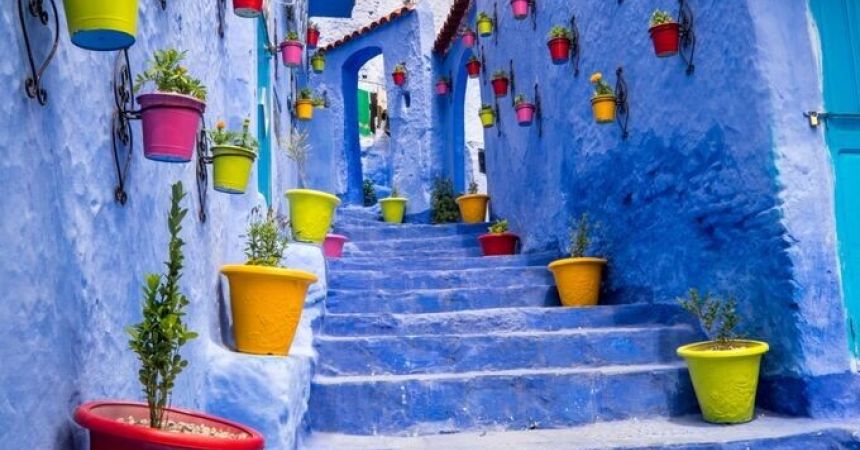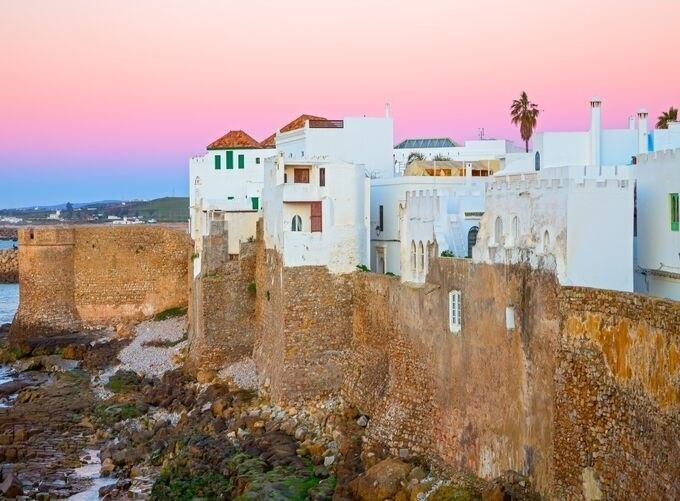
6-Day Morocco Itinerary: Cities, Desert, and More
A land of shifting sands, vibrant souks, and imperial cities, Morocco is the gateway to North Africa and a treasure trove of sensory experiences. From the chaotic charm of Marrakech to the serene silence of the Sahara Desert, Morocco effortlessly weaves together Arab, Berber, and European influences.
If you’re short on time but eager to explore the essence of Morocco, this 6-day itinerary strikes the perfect balance between culture, adventure, and relaxation. You'll explore historical medinas, climb dramatic kasbahs, trek across golden dunes, and connect with local traditions.
Overview of the 6-Day Morocco Itinerary
- Day 1: Arrival in Marrakech
- Day 2: Explore Marrakech
- Day 3: High Atlas Mountains & Aït Benhaddou
- Day 4: Sahara Desert Adventure
- Day 5: Sunrise in the Dunes & Drive to Ouarzazate
- Day 6: Return to Marrakech & Departure
Day 1: Welcome to Marrakech – The Red City
Morning: Arrival and Hotel Check-in
Land at Marrakech Menara Airport, where your Moroccan journey begins. Arrange a hotel transfer or take a taxi to your riad in the medina—a traditional guesthouse tucked inside the old city’s maze-like alleys.
Afternoon: Dive into the Medina
After checking in and refreshing, take your first walk through the medina. Head to Jemaa el-Fnaa, the city’s main square, where you’ll find snake charmers, storytellers, musicians, and countless food stalls.
Venture into the souks:
- Souk Semmarine – For colorful fabrics and leather goods
- Souk El Attarine – For spices, perfumes, and oils
- Souk Chouari – For handwoven baskets and woodwork
Day 2: Cultural Gems of Marrakech
Morning: Explore the City's Palaces and Tombs
Start your day at the serene Bahia Palace, a 19th-century masterpiece of Moroccan-Andalusian architecture. Its mosaic courtyards and painted ceilings offer a quiet refuge from the medina.
Next, visit:
- El Badi Palace – A majestic ruin that once showcased the riches of the Saadian dynasty
- Saadian Tombs – Final resting place of sultans, rediscovered in 1917
- Mellah (Jewish Quarter) – Visit the synagogue and spice markets
Afternoon: Jardin Majorelle & Yves Saint Laurent Museum
Head to Jardin Majorelle, a peaceful botanical garden filled with exotic plants and cobalt blue buildings. Nearby, visit the YSL Museum, which celebrates the iconic designer’s love for Morocco.
Day 3: Marrakech to Aït Benhaddou via the Atlas Mountains
Morning: Scenic Drive Through the High Atlas Mountains
Start early for a day of travel and discovery. Travel along the Tizi n'Tichka Pass, the highest major mountain pass in North Africa (2,260m). The winding road offers stunning views of Berber villages clinging to terraced hillsides.
Travel time: About 4 hours to Aït Benhaddou with stops.
Afternoon: Explore Aït Benhaddou
Arrive in Aït Benhaddou, a fortified ksar (village) made of mudbrick. This UNESCO World Heritage Site has served as the backdrop for films like Gladiator, Lawrence of Arabia, and Game of Thrones.
What to see:
- The winding lanes of the ksar
- The view from the top of the hill
- Kasbahs with intricately carved wooden doors
- Local artisan shops and cafés
Evening: Overnight in Aït Benhaddou or Ouarzazate
Enjoy a hearty Moroccan dinner and watch the stars emerge over the desert plains.
Day 4: Aït Benhaddou to Merzouga – Into the Sahara
Morning: Long Drive to the Desert
After breakfast, continue your journey to Merzouga, the gateway to Erg Chebbi—one of Morocco’s most famous stretches of Sahara dunes.
Drive time: Approximately 6 hours with scenic stops.
Suggested stops along the way:
- Todra Gorge – Towering canyon walls ideal for photos and short hikes
- Rissani – A desert town with a lively market and traditional Berber architecture
Late Afternoon: Camel Trek into the Dunes
At Merzouga, trade your car for a camel and ride into the heart of the desert. The journey through Erg Chebbi’s golden dunes is unforgettable, especially as the sun dips low and casts long shadows over the sand.
Evening: Overnight in a Desert Camp
Spend the night in a luxury or traditional Berber tent at one of the desert camps.
After dinner, enjoy music by the fire, gaze at the stars, and feel the stillness of the Sahara.
Day 5: Sunrise and Return via Ouarzazate
Morning: Sunrise and Return Ride
Wake early to climb a dune and watch the sunrise over the desert. After a light breakfast, ride back to Merzouga by camel or 4x4.
Midday: Begin the Return Journey
Start your drive back toward Ouarzazate via Alnif or Tinghir, depending on your route. Break the journey with lunch at a local roadside café.
If time allows, stop again at Todra Gorge or Dades Valley—known for its dramatic rock formations and winding roads.

Evening: Overnight in Ouarzazate or Skoura
Enjoy a peaceful dinner, and take time to relax before your final day on the road.
Day 6: Return to Marrakech and Farewell Morocco
Morning: Explore Ouarzazate (if time allows)
Before heading back to Marrakech, stop at:
- Taourirt Kasbah – An impressive mudbrick palace
- Atlas Film Studios – Sets from Gladiator, The Mummy, and Kingdom of Heaven
Grab coffee and a last look at the desert town before the drive.
Afternoon: Return to Marrakech
Drive the Tizi n'Tichka Pass once again, this time in reverse, and reflect on your journey through deserts, valleys, and mountains.
Drive time: 4–5 hours
Evening: Farewell Dinner in Marrakech
Back in the city, enjoy your final dinner.
Toast your Moroccan adventure with fresh mint tea and sweet pastries like chebakia and gazelle horns.
Optional Extensions (If You Have More Time)
- Essaouira – A relaxed coastal town with art galleries, music, and fresh seafood
- Fes – Morocco’s cultural capital with a medieval medina and ancient universities
- Chefchaouen – The famed Blue City in the Rif Mountains
Essential Travel Tips for Morocco
Best Time to Visit
- March to May and September to November: Ideal weather
- Summers (June–August) can be extremely hot in the desert and inland
- Winters (December–February) are cooler; snow is possible in the Atlas Mountains
Currency
- Moroccan Dirham (MAD)
- Carry cash for markets and smaller towns
Language
- Arabic and Berber (Amazigh) are official languages
- French is widely spoken; English is common in tourist areas
Transport
- Private drivers or tours are the easiest way to see multiple cities
- Shared taxis are common for short distances
- Trains and buses connect major cities
Cultural Etiquette
- Dress modestly, especially in rural areas
- Always ask before taking photos of people
- Tipping is expected for guides, drivers, and service staff
Is 6 Days in Morocco Enough?
Yes—with the right planning. This 6-day itinerary covers:
- The vibrancy of Marrakech
- The mystique of Aït Benhaddou
- The wonders of the Sahara
- The natural beauty of southern Morocco
While you won’t see every corner of the country, this route delivers an unforgettable introduction to Morocco’s essence—its people, landscapes, culture, and spirit.
You’ll leave with sand in your shoes, color in your camera, and a yearning to return.



